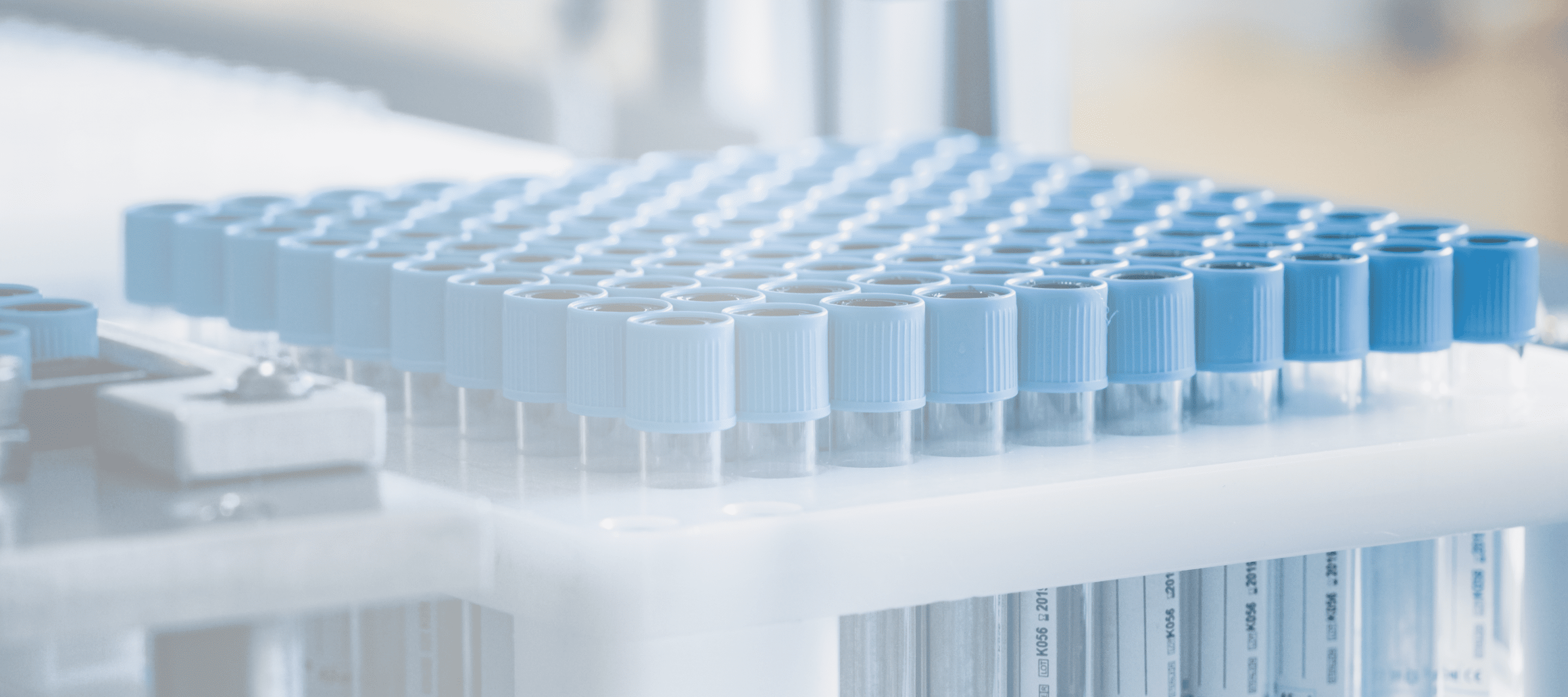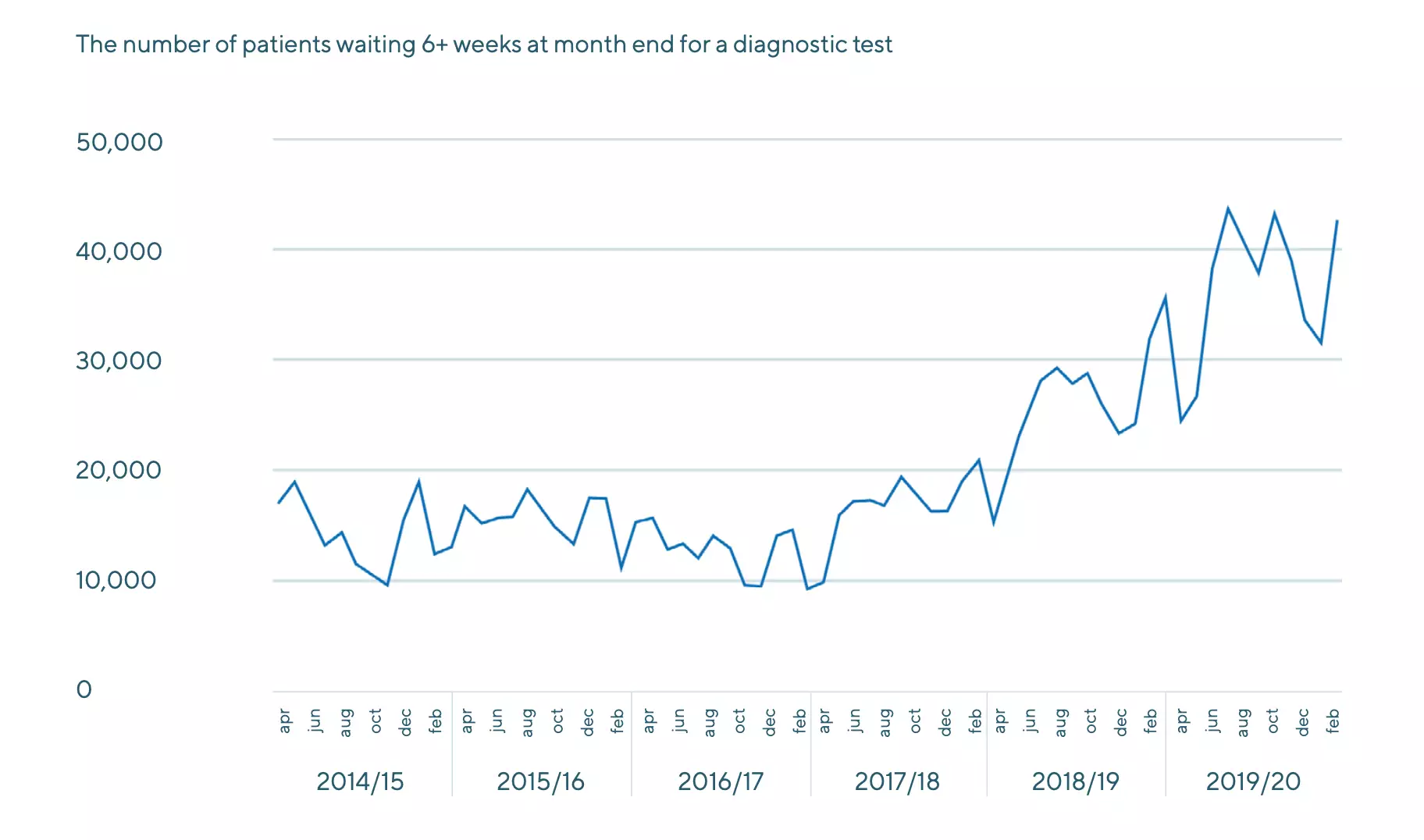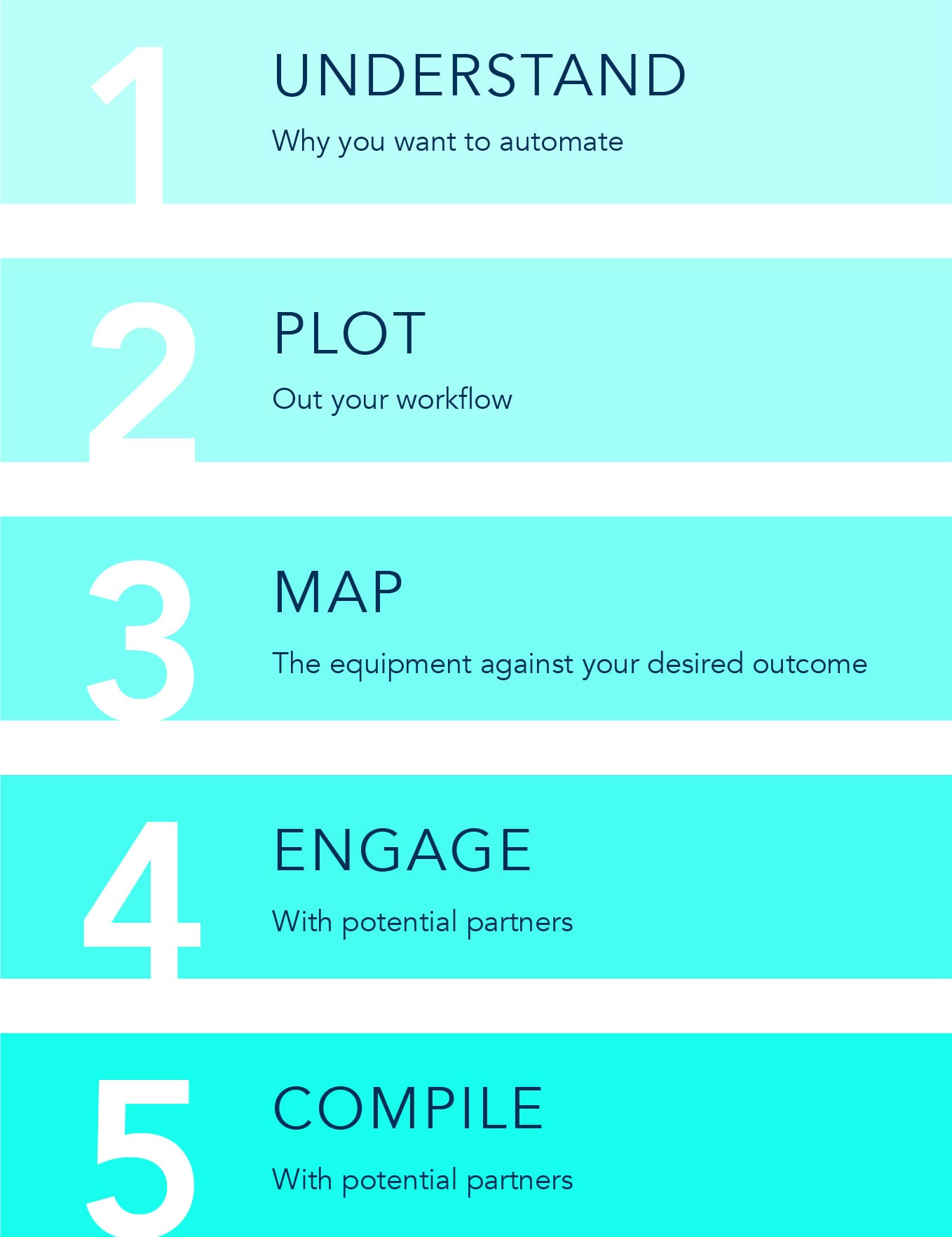1. Understand why you want to automate
For your automation solution to be effective, it needs to target pressing issues in your pathology lab. Common motivations for automating diagnostics include:
- Quality control problems
- Cost issues
- Staffing shortages
- Capacity concerns
By fully understanding the scope of the problem, you can better understand what success will look like for your lab.
2. Plot out your workflow
Next, map out the standard operating procedure for the processes you want to automate. Performing time trials and quality monitoring will help you to understand things such as:
- How long does it take for a human to conduct the process?
- How many mistakes does a human make doing this task?
- How many tests can human workers perform in one day?
- Are there parts of your process that create delays or impact quality?
3. Map tech against desired outcome
Once you know your processes, map this information out against your automation needs and the outcomes you want. For example, you may have set a target of 10,000 tests a week, but you’re currently falling short by 5,000. Once you have identified this gap, you can better understand what available technology will help you reach your goal.
4. Engage with potential partners
Just because you have found a technology that should address your needs does not mean that you have found the solution. The reality is that the most significant factor in the success of any automation project is the partner you work with.
Therefore, it is good practice to engage with several partners and speak to them about your requirements to see what’s available for you. To identify the best partners, here are several important things they should do for you:
- Visit you on-site to understand your specific needs
- Help with the whole automation process, rather than just a slice of it
- Create a solution that’s flexible enough for your changing needs
- Provide excellent customer service and ongoing support
- Help you fill in the blanks around what a machinery and automation solution should look like
- Provide transparency around price and lead times
The process of choosing a partner can be challenging, so we will cover it in more detail in the following section.
5. Compile a business case for automation
Before automating your lab, it is important to pull together a business case for automation so you can clearly map progress and understand the ROI on your automation investment. You should bring all the stakeholders involved into this process.
A business case is unique to each lab, but there are a few general things that are worth considering:
- The financial impact of the investment
- How scalable your automation solution will be
- How much employees experience and safety in the lab will be improved
- The support model the partner provides
How Automata works with you to ensure quality in diagnostics
At Automata, we believe that it is time for lab automation solutions for diagnostics labs that are easy, adaptable and affordable enough to revolutionise healthcare.
That is why we have developed our lab automation platform, Automata Labs. Automata Labs enables clinical labs to expedite diagnostic testing by combining tried-and-tested lab equipment with robotic automation technology.
Comprising proprietary hardware, single-platform software and a world-class service, we partner with you to take the hassle out of automation, empowering you to achieve more reliable results faster than ever before.







